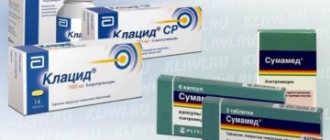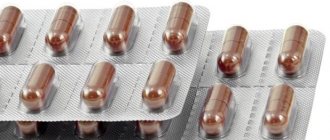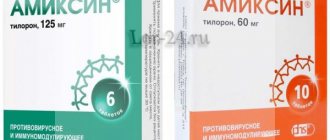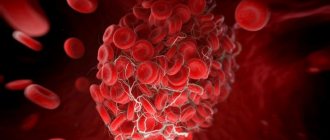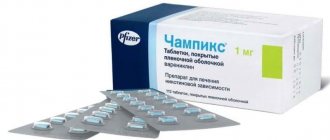Difficulties in the functioning of the digestive tract are one of the most common today. Problems of this kind bother people of different ages, and a whole set of factors are to blame, among which it is worth highlighting improper and irregular nutrition, as well as the influence of nervous tension. Heaviness that occurs after eating, a gag reflex due to overeating or as a symptom of a disease - all this causes a lot of discomfort. Undoubtedly, it is necessary to eliminate the problem from its root cause, however, to combat such unpleasant symptoms, there are specialized drugs, in particular Motilium.
Composition and release form
Motilium is produced in several forms:
- Coated tablets. They are convex on both sides, round, made in white or light beige, with the inscriptions “JANSSEN” on one part and “M/10” on the other. Packed in blisters of 10 pieces, of which there can be either 1 or 3 in a box.
- Suspension. The consistency resembles a homogeneous white jelly. Sold in dark brown glass bottles of 100 ml, which come with a dosage syringe. The liquid preparation is also called syrup, but this is incorrect.
- Lozenges. They look like fragile white circles, packaged in blisters, the cells of which are sealed with foil. When interacting with saliva, they turn into a kind of mush that is easy to swallow. Sold in 10 or 30 pieces.
Motilium is not available in the form of drops, injection solutions or other forms.
The instructions for use indicate that the role of the active substance in the medicine is played by domperidone, and the additional ingredients are:
- for suspension ㅡ saccharin, sodium hydroxide and carboxymethylcellulose, MCC, water, sorbitol and polysorbate, methyl and propyl parahydroxybenzoate;
- in absorbable tablets ㅡ poloxamer 188, mint additive, aspartame, gelatin and mannitol;
- for coated medications ㅡ corn and potato starch, magnesium stearate, polyvidone, lauryl sulfate, lactose and hydrogenated vegetable oil.
The form of Motilium is selected by the doctor based on the age and health status of the patient.
What cheaper analogues exist?
In specific conditions, it may be necessary to use a drug with the same effect, but with a different composition or from a different price category. This is where the question becomes relevant - what to replace Motilium with. The following drugs can be used as analogues:
- Gastropome; - has the same active ingredient in its composition and is available in tablet form;
- Domidon, Domrid - the active ingredient is similar;
- Metoclopramide – increases tract motility, and also eliminates nausea and vomiting;
- Mosid - the active component of the composition is mosapride, the drug will become one of the means for stimulating the motility of the digestive tract;
- Motinorm - works on the basis of domperidone, like the drug in question;
- Cerucal (the drug belongs to the same group, but works on the basis of the substance metoclopramide), etc.
pharmachologic effect
The instructions indicate that domperidone is quickly absorbed into the body when taken on an empty stomach (the maximum concentration is observed after 30–60 minutes) and has an antiemetic effect. Patients with gastrointestinal diseases should take the medicine some time before meals (about half an hour), otherwise the absorption period will be longer due to decreased acidity.
Motilium improves the tone of the sphincter between the stomach and esophagus, activates intestinal peristalsis and accelerates the contraction of the stomach walls, which is why ingested food is not vomited out, but is processed further.
Motilium does not provoke a change in the volume of gastric juice produced, but increases the level of prolactin.
The active substance has properties in common with antipsychotic drugs, but does not cause extrapyramidal side effects, such as akathisia, tremor, parkinsonism, etc. It does not penetrate the blood-brain barrier and affects only the chemoreceptor trigger zone located in the brain. The remaining areas of the central nervous system are not affected.
Domperidone inhibits dopamine receptors, which is why nerve impulses from the digestive tract to the vomiting center are not carried out.
The breakdown of the active substance occurs in the liver; the drug does not induce its own metabolism. It is excreted along with waste products: 66% in feces, the rest in urine. Unchanged: 10% - in feces, 1% - in urine.
Drugs with similar effects
When a medicine is not suitable for one reason or another (there are contraindications, the price is not satisfactory, the drug is not on sale), you have to ask the pharmacist what can replace it. It would be correct if the attending physician suggests, along with the prescription, possible analogues of the main medicine.
Speaking about drugs that act like motilium, we can name the following motilium analogues - the price of each drug is also indicated:
- Domperidone (tablets, price ranges from 84-200 rubles);
- Motilak (tablets, price ranges from 140-240 rubles);
- Motonium (tablets, 103-105 rubles);
- Passazhiks (tablets, 140-256 rubles).
If for some reason you are confused by the price of Motilium, the cheaper analogs listed above can be purchased if desired.
When problems arise with the gastrointestinal tract, you should go to the doctor and get examined. Even a temporary disruption of the digestive system must be corrected by a specialist. When urgent medical support is required, basic information about the drug Motilium will help: instructions for use - price - reviews - analogues. Having studied this information in detail, you can form your opinion about the effectiveness and efficiency of this drug in various cases. However, when deciding on personal use and in order to avoid mistakes, it makes sense to consult a doctor, and you must undergo a diagnostic examination.
We also recommend the article: Gastal - what does it help with?
Indications for use
The instructions for Motilium contain the following indications:
- flatulence, abdominal pain and bloating;
- vomiting caused by medications or poisoning;
- functional dyspepsia in children;
- feeling of epigastric fullness;
- heartburn and nausea;
- cyclic vomiting syndrome.
The medicine is used to eliminate reflux and regurgitation in newborns.
Indications
A complex of dyspeptic symptoms, often associated with delayed gastric emptying, gastroesophageal reflux, esophagitis:
- feeling of fullness in the epigastrium,
- early satiety,
- feeling of bloating,
- pain in the upper abdomen;
- belching,
- flatulence;
- nausea,
- vomit;
- heartburn,
- belching with or without stomach contents.
Nausea and vomiting of functional, organic, infectious origin, caused by radiotherapy, drug therapy or diet disorders. A specific indication is nausea and vomiting caused by dopamine agonists when used in Parkinson's disease (such as levodopa and bromocriptine).
Treatment regimen
The instructions for Motilium indicate the following method of use, which depends on the form of the medicine and the age of the patient.
Dissolving tablets:
- children from 5 to 12 years old and weighing more than 35 kg with dyspepsia ㅡ 1 piece (10 mg) three times a day (if necessary, you can take the fourth before bedtime);
- For adults and adolescents from 12 years of age, for nausea, take 2 tablets (20 mg) 3-4 times a day, from 5 to 12 years - 1 tablet 3-4 times.
The medicine is very fragile, so you should carefully remove it from the blister pack by removing the foil seal. When interacting with saliva, the product will turn into a paste that is easily swallowed. No need to drink water.
The maximum permissible dosage, according to the instructions for Motilium, for all people is 80 mg of domperidone, for patients younger - 2.4 mg per 1 kg of body weight.
Enveloped drug:
- from 12 years old ㅡ 1-2 tablets 3-4 doses per day;
- from 5 to 12 years ㅡ 1 piece 3-4 times a day.
This type is prescribed only to people weighing more than 35 kg, and to children who are able to swallow Motilium on their own. The maximum permissible dose is 80 mg of domperidone.
Suspension:
- from 12 years old ㅡ 10–20 ml 3–4 times a day;
- up to 12 years ㅡ 0.25–0.5 ml per 1 kg of body weight 3–4 times a day.
The maximum dosage is 80 mg of the active substance.
Sequencing
Before use, shake the jar thoroughly so that the sediment is evenly distributed throughout the bottle. To open the suspension Motilium, you need to press on the lid and turn it counterclockwise.
Take the medicine using a syringe that comes with the liquid drug:
- a device is placed in an open bottle;
- take the required amount of the product (there are two scales on the device: with the child’s weight (up to 20 kg) and with the volume of the substance (up to 5 ml), you can rely on any of them);
- give it to the baby;
- Rinse the syringe thoroughly with hot water.
The suspension can be used for children, who find it easier to swallow liquid than tablets, and for adults, depending on preferences and health status.
A course of treatment with any type of Motilium should not last more than 4 weeks without a doctor’s recommendation.
Motilium for kids
Name:
Motilium for kids
Release form, composition and pack
The suspension for oral administration is homogeneous, white. 5 ml domperidone 5 mg. Excipients: sodium saccharin, microcrystalline cellulose, sodium carboxymethylcellulose, sorbitol, methyl parahydroxybenzoate, propyl parahydroxybenzoate, sodium hydroxide, polysorbate, purified water.
Clinical and pharmacological group: Antiemetic product of central action, blocking dopamine receptors.
pharmachologic effect
Antiemetic product, stimulant of gastrointestinal motility. Domperidone is a dopamine antagonist that, similar to metoclopramide and some antipsychotics, has antiemetic properties. However, unlike these products, domperidone does not penetrate the BBB well. The use of domperidone is not often accompanied by extrapyramidal side effects, especially in adults, but domperidone stimulates the release of prolactin from the pituitary gland.
The antiemetic effect may be due to a combination of peripheral (gastrokinetic) action and antagonism of dopamine receptors in the chemoreceptor trigger zone. When taken orally, domperidone increases the duration of antral and duodenal contractions, accelerates gastric emptying - the release of liquid and semi-solid fractions in healthy people and solid fractions in sick people, in cases where this process has been slowed down, and increases the pressure of the sphincter of the lower esophagus in healthy people. Domperidone has no effect on gastric secretion.
Pharmacokinetics
Suction
After oral administration on an empty stomach, domperidone is rapidly absorbed from the gastrointestinal tract. Cmax in blood plasma is achieved within approximately 1 hour. The low absolute bioavailability of domperidone when taken orally (approximately 15%) is due to extensive primary metabolism in the intestinal wall and liver. Although in healthy people the bioavailability of domperidone increases when taken after a meal, patients with gastrointestinal complaints should take domperidone 15-30 minutes before meals. Hypoacidity of gastric juice reduces the absorption of domperidone. When taking the product after a meal, it takes longer to reach Cmax and the AUC increases slightly.
Distribution
When taken orally, domperidone does not accumulate or induce its own metabolism. After taking domperidone for 2 weeks at a dose of 30 mg/day, Cmax in blood plasma after 90 minutes after the second dose was equal to 21 ng/ml and was almost the same as after taking the first dose (18 ng/ml). Plasma protein binding - 91-93%. Concentrations of domperidone in breast milk of lactating women are 4 times lower than the corresponding concentrations in blood plasma.
Metabolism
Domperidone is metabolized in the liver by hydroxylation and N-dealkylation. When studying the metabolism of the product in vitro using diagnostic inhibitors, it was found that isoenzyme 3A4 is the main isoenzyme of the cytochrome P450 system involved in the process of N-dealkylation of domperidone, while isoenzymes CYP3A4, CYP1A2 and CYP2E1 are involved in the aromatic hydroxylation of domperidone.
Removal
Excretion in urine and feces is 31% and 66% of the dose taken, respectively. It is excreted unchanged in feces (10%) and urine (approximately 1%). T1/2 from blood plasma after taking a single dose in healthy volunteers is 7-9 hours.
Pharmacokinetics in special clinical situations
In patients with severe renal failure (serum creatinine level more than 6 mg/dL), T1/2 of domperidone increases from 7.4 hours to 20.8 hours, but plasma concentrations of the product are lower than in healthy volunteers.
Indications
- a complex of dyspeptic symptoms, often associated with delayed gastric emptying, gastroesophageal reflux, esophagitis (a feeling of fullness in the epigastrium, a feeling of bloating, pain in the upper abdomen, belching, flatulence, nausea, vomiting, heartburn and regurgitation);
- nausea and vomiting of functional, organic, infectious origin caused by radiotherapy, drug therapy or diet disorders;
- nausea and vomiting caused by dopamine agonists when used in Parkinson's disease (such as L-dopa and bromocriptine);
- regurgitation syndrome, cyclic vomiting, gastroesophageal reflux and other gastric motility disorders in babies.
Dosage regimen
Film-coated tablets are indicated for adults and children weighing more than 35 kg. Lozenges are indicated for adults and children over 5 years of age. In pediatric practice (especially children under 5 years of age), it is recommended to use Motilium in the form of a suspension.
For chronic dyspepsia, adults and children are prescribed 10 mg 3 times a day 15-30 minutes before meals and, if necessary, before bedtime. The maximum daily dose is 80 mg.
If necessary, for adults and children over 12 years of age, the dose can be doubled.
For children, the product in the form of a suspension is prescribed at the rate of 2.5 ml/10 kg of body weight (which corresponds to 250 mcg/kg of body weight) 3 times a day before meals and, if necessary, before bedtime. If necessary, the indicated dose can be doubled (except for children under 1 year of age). The maximum daily dose is 2.4 mg/kg body weight, but not more than 80 mg. For nausea and vomiting, adults and children over 12 years of age are prescribed 20 mg 3-4 times a day before meals and at bedtime. The maximum daily dose is 80 mg.
Children aged 5 to 12 years are prescribed 10 mg 3-4 times a day before meals and at bedtime. The drug in the form of a suspension is prescribed at the rate of 5 ml/10 kg of body weight (which corresponds to 500 mcg/kg of body weight) 3-4 times a day before meals and before bedtime. This dose is achieved by filling the pipette twice. The maximum daily dose is 2.4 mg/kg body weight, but not more than 80 mg.
In case of renal failure, it is recommended to increase the interval between taking the product. Because Since a very small percentage of the product is excreted unchanged by the kidneys, there is hardly any need to adjust the single dose in patients with renal failure. However, when re-prescribed, the frequency of administration should be reduced to 1-2 times a day, depending on the severity of renal failure, and a dose reduction may also be required.
Rules for using the suspension
The bottle of suspension should be shaken before use. The suspension is supplied in a package protected from accidental opening by children, so the bottle should be opened as follows:
- Press down on the plastic cap of the bottle while turning it counterclockwise.
- Remove the unscrewed cap.
- Remove the pipette from the case (supplied only with the 100 ml bottle).
- Holding the lower ring in place, raise the upper one to the mark corresponding to the baby’s weight (in kg).
- Holding the lower ring, remove the filled pipette from the bottle.
- After use, rinse the pipette with water, place the empty pipette back in the case and close the bottle.
Rules for the use of lozenges
Lozenges are available in blister packs. Since the tablets are quite fragile, they should not be pressed through the foil to avoid damage. In order to remove a tablet from the blister, you must take the foil by the edge and completely remove it from the cell in which the tablet is located. Then gently press down from below and remove the tablet from the package. The tablet should be placed on the tongue. Within a few seconds it will disintegrate on the surface of the tongue and can be swallowed with saliva without washing it down with water.
Side effect
- From the digestive system: not often - gastrointestinal disorders; in isolated cases - transient intestinal spasms.
- From the side of the central nervous system: extrapyramidal symptoms (very rarely - in children; in isolated cases - in adults); completely reversible and disappear after cessation of treatment. If the BBB is insufficiently developed (for example, in infants under 1 year of age) or its functions are impaired, the possibility of neurological side effects cannot be completely excluded.
- From the endocrine system: hyperprolactinemia is possible, which rarely leads to galactorrhea, gynecomastia, amenorrhea. Allergic reactions: uncommon - rash, urticaria.
Contraindications
- gastrointestinal bleeding;
- mechanical obstruction or perforation, in which stimulation of the motor function of the stomach can be dangerous;
- prolactin-secreting tumor of the pituitary gland (prolactinoma);
- simultaneous use of oral forms of ketoconazole;
- high sensitivity to product components.
Pregnancy and lactation
There is insufficient data on the use of Motilium during pregnancy. To date, there is no evidence of an increased risk of developmental defects in humans. However, the use of Motilium during pregnancy (especially in the first trimester) is possible only in cases where the expected benefit of therapy for the mother outweighs the potential risk for the fetus.
In women, the concentration of domperidone in breast milk is 10-50% of the corresponding concentration in plasma and does not exceed 10 ng/ml. The total amount of domperidone excreted into breast milk is less than 7 mcg/day when using the maximum permissible doses. It is unknown whether this level has a negative effect on newborns. Therefore, if it is necessary to use Motilium during lactation, breastfeeding should be stopped.
Use for liver dysfunction
Motilium should be prescribed with caution to patients with liver failure, given the high degree of metabolism of domperidone in the liver.
Use for renal impairment
In case of renal failure, it is recommended to increase the interval between taking the product. Because Since a very small percentage of the product is excreted unchanged by the kidneys, there is hardly any need to adjust the single dose in patients with renal failure. However, when re-prescribed, the frequency of administration should be reduced to 1-2 times a day, depending on the severity of renal failure, and a dose reduction may also be required.
special instructions
When using Motilium in combination with antacid or antisecretory products, it must subsequently be taken after meals, i.e. they should not be taken simultaneously with Motilium. Motilium should be prescribed with caution to patients with liver failure, given the high degree of metabolism of domperidone in the liver. During long-term therapy, patients should be monitored regularly.
Use in pediatrics
Due to the fact that metabolic processes and BBB functions are not fully developed in the first months of life, any product should be prescribed to infants very carefully and under close medical supervision. Because The lack of effect on the central nervous system typical of Motilium is mainly the result of weak penetration through the blood-brain barrier; the occurrence of neurological symptoms cannot be completely excluded in children under 1 year of age. Overdose can cause neurological side effects in children.
Impact on the ability to drive vehicles and operate machinery
Motilium does not affect the ability to drive a car or operate machinery.
Overdose
Symptoms: drowsiness, disorientation and extrapyramidal reactions, especially in children. Treatment: Use of activated carbon and careful observation. Anticholinergics, products used to treat parkinsonism, or antihistamines may be effective when extrapyramidal reactions occur.
Drug interactions
Anticholinergic products may counteract the antidyspeptic effect of Motilium. The bioavailability of Motilium when taken orally is reduced by previous administration of cimetidine or sodium bicarbonate. You should not take antacid and antisecretory products at the same time as Motilium, because they reduce its bioavailability. The main metabolic pathway of domperidone occurs with the participation of isoenzyme 3A4 of the cytochrome P450 system.
Based on in vitro studies, it can be assumed that with the simultaneous use of domperidone and drugs that significantly inhibit this isoenzyme, an increase in plasma domperidone levels is possible. Examples of inhibitors of the CYP3A4 isoenzyme are the following drugs: azole antifungal products, macrolide antibiotics, HIV protease inhibitors, nefazodone.
A study of the interaction of domperidone with ketoconazole in healthy volunteers revealed that ketoconazole inhibits the CYP3A4-dependent primary metabolism of domperidone, resulting in an approximately threefold increase in the Cmax and AUC of domperidone in the plateau phase.
A study on the interaction of domperidone and ketoconazole showed that when combined with domperidone at a dose of 10 mg 4 times a day and ketoconazole at a dose of 200 mg 2 times a day, a prolongation of the QT interval by 10-20 msec is observed.
With domperidone monotherapy, both in similar doses and when taking a daily dose of 160 mg (which is 2 times the maximum permissible daily dose), no clinically significant changes in the QT interval were observed. Theoretically (since the product has a gastrokinetic effect), Motilium could influence the absorption of concomitantly administered products, in particular delayed-release products or enteric-coated products. However, the use of domperidone in patients taking paracetamol or selected digoxin therapy did not affect the level of these products in the blood. Motilium can also be combined with antipsychotics, the effect of which it does not enhance; dopaminergic receptor agonists (bromocriptine, levodopa), the undesirable peripheral effects of which, such as digestive disorders, nausea, vomiting, it suppresses without neutralizing their basic properties.
Storage conditions and periods
The drug should be stored out of the reach of children at a temperature of 15° to 30°C.
The shelf life of film-coated tablets and oral suspension is 5 years, lozenges - 2 years. Attention! Before using the medication “Motilium for kids”, you should consult your doctor. The instructions are provided solely for familiarization with “ Motilium for kids ”.
Reception features
There are a number of health conditions that require careful treatment. These include pregnancy, breastfeeding, childhood and some functional characteristics of organs.
During pregnancy and lactation
Motilium is not used during pregnancy due to a lack of clinical studies. The instructions indicate that there is no data on the negative effects of domperidone on a child, so during pregnancy it can be taken if the benefit to the woman is higher than the harm to the baby.
Treatment is prohibited during lactation.
The active substance is absorbed into the body and can be transferred to the newborn in an amount of 50% of the dose taken by the mother.
While using Motilium, breastfeeding should be suspended.
In childhood and old age
The instructions indicate that the tablets can only be given to children over 5 years of age. To restore the health of babies, a suspension form of Motilium is used, which is easily dosed and swallowed by the crumbs. Before starting treatment, you should consult with a specialist about the frequency and dosage of the drug.
There are no restrictions for older people, but you need to make sure that the liver, where domperidone is broken down, and the kidneys, through which some of the substance’s metabolites are excreted, need to be ensured. If you have heart disease, you can take Motilium in any form under the supervision of a doctor.
Description of the drug
The main effect of Motilium suspension is its antiemetic effect. This drug also stimulates gastrointestinal motility. Available in 100 ml brown glass bottles. The kit includes a plastic syringe with a dispenser. The bottle and syringe are packed in a cardboard box. It must include detailed instructions.
The suspension has the appearance of a white emulsion. The main active ingredient is domperidone. This is the name given to this medicine in the international classification of medicinal products.
Microcrystalline cellulose, carmellose, liquid sorbitol, purified water and other components are used as additional components.
The active component of the drug is absorbed very quickly when the suspension is taken on an empty stomach. Its maximum concentration in the blood is observed half an hour to an hour after administration. Therefore, Motilium Suspension is consumed 15-30 minutes before meals.
Domperidone does not accumulate in the body and therefore does not cause addiction. It undergoes rapid metabolism and is excreted in urine 30% and feces 66% of the dose taken. 7-9 hours after taking the Molyllium suspension in a single dose, the concentration of its active component in the blood plasma is reduced to zero.
It is recommended to begin treating children, regardless of age, with Motilium in the form of a suspension with a minimum dose. In most cases, a small amount of medication has a positive therapeutic effect the first time.
Contraindications and side effects
The instructions indicate the following prohibitions on taking Motilium:
- diagnosed bleeding in the gastrointestinal tract;
- intestinal obstruction;
- treatment with cytochrome P450 3A4 inhibitors;
- moderate to severe liver dysfunction;
- presence of prolactinoma;
- body weight less than 35 kg;
- individual intolerance to the components of the composition.
If you have problems with kidney function, heart function, electrolyte balance, conductivity, or arrhythmia, you can take domperidone only under medical supervision.
Side effects from the drug are as follows:
- hyperprolactinemia and amenorrhea;
- enlargement of the mammary glands in men;
- Gastrointestinal disorders and intestinal spasms;
- itching, hives and rash;
- allergies and anaphylactic shock;
- convulsions, drowsiness and apathy.
Symptoms appear when the maximum permissible amount of Motilium specified in the instructions and recommended by the doctor is not observed, or when contraindications are ignored.
MOTILIUM: SIDE EFFECTS
Side effects are given with a distribution by frequency and organ system. The frequency of side effects was classified as follows: very often (>1/10), often (>1/100, 1/1000, 1/10,000,
From the digestive system: rarely – gastrointestinal disorders; very rarely - transient intestinal spasms.
From the nervous system: very rarely - extrapyramidal syndrome, convulsions, drowsiness, headache. Extrapyramidal effects occur very rarely in children and in isolated cases in adults; they are completely reversible and disappear immediately after stopping the drug.
Mental disorders: very rarely - agitation, nervousness. Side effects such as convulsions, drowsiness and agitation are very rare and occur mainly in children and newborns.
From the immune system: very rarely - anaphylactic reactions, including anaphylactic shock, angioedema, allergic reactions, urticaria.
From the endocrine system: rarely - an increase in plasma prolactin levels, due to the fact that the pituitary gland is located outside the blood-brain barrier; in rare cases, this hyperprolactinemia can stimulate the appearance of neuro-endocrine phenomena such as galactorrhea, gynecomastia and amenorrhea.
From the skin: very rarely - itching, rash.
Overdose
An overdose of the drug is possible because it is absorbed into the body. If the number of tablets or the volume of Motilium suspension is exceeded, impaired coordination of movements, drowsiness, apathy and extrapyramidal reactions may occur.
If any two symptoms appear, you need to rinse the stomach with plenty of water, take sorbents and discontinue the drug.
If you have neuroleptic disorders, you should immediately consult a doctor.
Contraindications
- prolactin-secreting tumor of the pituitary gland (prolactinoma);
- simultaneous use of oral forms of ketoconazole,
- erythromycin or other strong inhibitors of the CYP3A4 isoenzyme,
- causing prolongation of the QTc interval,
- such as fluconazole,
- voriconazole,
- clarithromycin,
- amiodarone and telithromycin;
- gastrointestinal bleeding;
- mechanical obstruction or perforation,
- in which stimulation of the motor function of the stomach may pose a danger;
- established intolerance to the drug and its components.
The drug should be prescribed with caution in case of renal and liver failure, as well as in children.
Drug interactions
According to the instructions, anticholinergics can greatly reduce the effect of Motilium.
The medicine becomes less active if you take sodium bicarbonate (baking soda) or cimetidine before taking it. It should not be combined with agents that reduce the secretion of gastric juice or neutralize hydrochloric acid, as this reduces the absorption of the active substance.
If domperidone is taken together with cytochrome P450 3A4 inhibitors, its concentration in the blood plasma increases. Such inhibitor drugs include azoles, macrolides, drugs for antiretroviral therapy, and calcium antagonists.
Clinical trials have proven that Ketoconazole and Erythromycin reduce the rate of primary breakdown of the active substance Motilium, so they should not be taken in parallel.
Combining the drug with Paracetamol and Digoxin does not affect the concentration of drugs in the blood plasma. The instructions indicate that Motilium can be used with antipsychotic drugs, the effect of which it does not enhance, and dopamine receptor agonists, while domperidone does not interfere with their action.
Pregnancy and lactation
There is insufficient data on the use of Motilium® during pregnancy.
To date, there is no evidence of an increased risk of developmental defects in humans. However, Motilium® should be prescribed during pregnancy only in cases where the expected benefit of therapy for the mother outweighs the potential risk to the fetus.
In women, the concentration of domperidone in breast milk is 10-50% of the corresponding concentration in plasma and does not exceed 10 ng/ml. The total amount of domperidone excreted into breast milk is less than 7 mcg/day when using the maximum permissible doses. It is unknown whether this level has a negative effect on newborns. Therefore, if it is necessary to use the drug Motilium® during lactation, breastfeeding should be discontinued.
special instructions
In case of kidney failure, you should increase the intervals between doses, but do not reduce the dosage: instead of 3-4 uses of 2 tablets, you need to take 4 pieces 2 times a day. If there is deterioration in organ function, you need to reduce the amount of medication.
The instructions indicate that Motilium is not used for vomiting after surgery.
Impaired liver function is a prohibition on treatment with the drug, however, if necessary, therapy can be carried out under medical supervision.
If you need to use domperidone together with antacids or H2-blockers, you should not combine their use. It is optimal to take the antiemetic before meals, and the rest of the medications after.
In case of lactose, galactose and glucose intolerance or hyperphenylalaninemia, the drug is not prescribed.
Most often, side effects occur in children when the dosage of the medicine is not observed, so it should be taken only on the advice of a doctor, who will specify the maximum permissible amount of the substance.
Motilium does not affect the reaction speed, so it can be used when working with dangerous mechanisms and driving vehicles.
Properties of the drug
Motilium is a drug with an antiemetic effect. Once in the gastrointestinal tract, it improves intestinal function, preventing food stagnation in the stomach and intestines. It will allow you to get the maximum idea about the medicine Motilium, instructions for use - price - reviews, all the information collected in a complex.
The basis of the drug's action is domperidone. 1 tablet contains 10 mg of active substance. 5 ml of suspension contains 5 mg of the drug. The instructions provided for the drug Motilium contain data on its use for the treatment of gastrointestinal disorders.
Release forms and price
Motilium is sold in pharmacies without a prescription. It can be purchased as oral tablets, lozenges, and oral suspension. Regardless of the form of release of Motilium, its price is approximately the same:
- Motilium tablets for oral administration price for 10 pieces on average from 246, for 30 pieces - from 546 rubles;
- Motilium tablets for resorption cost an average of 10 pieces from 296, for 30 pieces - from 520 rubles;
- Motilium suspension, volume 100 ml – from 560 rubles.
Indications for use
Motilium can be taken for symptoms such as:
- heartburn;
- nausea;
- retching, vomiting;
- gastric stoppage:
- bloating (stomach and intestines);
- belching;
- feeling of fullness in the stomach;
- pain in the upper abdomen, etc.
These symptoms can be either a manifestation of overeating and gastrointestinal disorders, but also a manifestation of certain diseases and problems. So, Motilium indications are as follows:
- esophageal reflux;
- inflammation of the esophagus (esophagitis);
- consequences of long-term treatment of other diseases, such as Parkinson's disease;
- consequences of chemotherapy.
It is quite normal to have a first aid kit at home or at work with the most popular drugs and first aid supplies. Disturbances in the gastrointestinal tract are a fairly common phenomenon, so the presence of this drug is justified.
It is advisable that this medicine be in the medicine cabinet on the recommendation of a doctor. If there are contraindications to its use, Motilium analogues, also recommended by a specialist, can be replaced in the first aid kit.
Contraindications
It is not recommended to take the drug if you are prone to allergies. Gastrointestinal diseases accompanied by bleeding, perforation of the stomach or intestines are a contraindication. Motilium should not be used if there is mechanical intestinal obstruction.
Pituitary adenoma is a contraindication for use, as well as renal and liver failure. However, even with these diagnoses, the drug can be used with the permission of a doctor and under his supervision. Motilium tablets are also not used to treat children under 5 years of age.
It is not recommended to take Motilium during pregnancy and nursing mothers, since its effect on the development of the fetus, as well as on young children, has not been sufficiently studied. If taking it during breastfeeding is unavoidable, then the baby should be switched to artificial feeding for the duration of treatment. Good information support for the instructions for the drug Motilium, reviews from people who took it and treated their children with this medicine.
Side effect
Treatment with Motilium may have side effects such as:
- lack of menstruation in women;
- increased levels of the hormone prolactin in the blood (hyperprolactinemia);
- unilateral or bilateral enlargement of male mammary glands.
Intestinal spasms and gastrointestinal disorders occur less frequently. The rarest side effect of the drug is allergic dermatitis.
Drug overdose
Long-term treatment with the drug, exceeding the maximum dose during treatment may cause overdose symptoms. This phenomenon can be identified by the following symptoms:
- weakness, lethargy, drowsiness;
- changes in muscle tone, impaired motor activity, the appearance of twitching or immobility, mainly in children.
If symptoms of overdose occur, you must inform your doctor, who will definitely recommend sorbent or cleansing medications (activated carbon, antiallergic medications). Next, about the simultaneous use and combination of the drug with other medications.
The drug can reduce the absorption of domperidone and, accordingly, reduce the therapeutic effect of drugs containing this active substance. Therefore, during simultaneous treatment, Motilium is taken before meals, and antacid or antisecretory drugs are taken after meals.
Drugs that weaken or stop the interaction of acetylcholine with cholinergic receptors (Amizil, Spasmoletin, Aprofen, etc.) can minimize the effect of the drug. This means that the drug must be prescribed by a doctor who is aware of all the characteristics of the patient’s health condition, the presence/absence of contraindications and concomitant treatment.
Analogues of Motilium
Among the drugs with similar results are the antiemetics presented below.
Table ㅡ What can replace Motilium
| Analogue name | Active substance | Dose (according to instructions) | Difference from Motilium |
| Motilak | Domperidone |
| Not available in suspension form |
| Passazhiks |
| Available in chewable tablet form | |
| Damelium | Domperidone moleate (12.72 mg equivalent to 10 mg pure substance) |
| Sold only in tablet format, 10 pcs per package |
| Motonium | Domperidone | Sold in a polymer jar of 30 pcs. | |
| Domet | In addition to suspension, absorbable and coated medications are produced in the form of chewable tablets. | ||
| Motinorm | Used for body weights greater than 20 kg; Sold in tablet format | ||
| Domstal | Domperidone and Omeprazole | 1 capsule 2 times a day | Active ingredients; Available in capsule form |
Analogs
Of course, in large pharmacies you can also find analogues of the drug that have the same effect as Motilium. However, they should only be used after consulting a doctor. The most common analogues of motilium:
- Brullium
- gastropome
- domidon
- Domrid
- metoclopramide
- metukal
- mosid
- motinol
- motoricum
- cerucal
- peridon
By the way, the price of motilium in pharmacies is not at all high; the suspension is considered the most expensive type of the drug. But the price of some motilium analogues is much higher.

